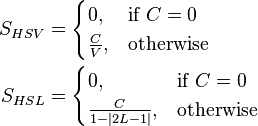Raster Image:-Raster images are actually a grid of pixel,each of which has a no of bits to designate its color equal to the color depth of device displaying it.It is also called bitmap images .In raster images image size is positively correlated to the no of pixel in an image the color depth & bits per pixel of the image. These are widely used in digital cameras ,scanners & laser printers.They are very popular in these days .Example of some Raster image file formats are JPEG,PNG,GIF ,TIFF,RAW & EXIF.
Vector Images:-Vector images can be any dimension dependent of file size.File size increases only with the addition of more vectors.Vector image format contain geometrical description which can be rendered smoothly at any desired display size.Vector images can be displayed with analog CRT technology such as that used in some electronic test equipment,medical monitor,radar displays ,laser shows & early video games.Plotters are also used vector data for draw graphics.Example of some Vector image file format are CGM,Gerber format & SVG.Some 2 D vector formats are AI,CDR,DrawingML etc.Vector images are not always appropriate in graphics work.
Generation Of Vector image:- Vector graphics is based on vectors (also called paths or strokes) which lead through locations called control points .Each of these points has a definite position on the x & y axes of the work plan.Each point ,as well is variety of database,including the location of the point in the work space & the direction of the vector.Each track can be assigned a color,a shape,a thickness & also a fill.This does not affect the size of the files in a substantial way because all information resides in the in the structure .
Difference between RGB & sRGB:-RGB color space is additive color space based on RGB color model.A particular RGB color space is defined by three chromatics of Red,Green & Blue additive color primaries.In this color space all colors produced are combination of these three primary colors.The complete specification of RGB color space also requires a white point chromacity & a Gamma correction curve.
sRGB color space is standard RGB color space created cooperatively by HP & Microsoft in 1996 for use monitors ,printers & the internet.sRGB uses the ITU-R BT.709 primaries & transfer function Gamma curve .Unlike other RGB color spaces ,sRGB gamma cannot be represented as a single numerical value.sRGB color space has been endorsed by W3cC,Exif & Intel etc.The sRGB color space is well specified & designed to match typical home & office viewing condition. sRGB color space is widely used in HDTV & CRTs.
Vector Images:-Vector images can be any dimension dependent of file size.File size increases only with the addition of more vectors.Vector image format contain geometrical description which can be rendered smoothly at any desired display size.Vector images can be displayed with analog CRT technology such as that used in some electronic test equipment,medical monitor,radar displays ,laser shows & early video games.Plotters are also used vector data for draw graphics.Example of some Vector image file format are CGM,Gerber format & SVG.Some 2 D vector formats are AI,CDR,DrawingML etc.Vector images are not always appropriate in graphics work.
Generation Of Vector image:- Vector graphics is based on vectors (also called paths or strokes) which lead through locations called control points .Each of these points has a definite position on the x & y axes of the work plan.Each point ,as well is variety of database,including the location of the point in the work space & the direction of the vector.Each track can be assigned a color,a shape,a thickness & also a fill.This does not affect the size of the files in a substantial way because all information resides in the in the structure .
Difference between RGB & sRGB:-RGB color space is additive color space based on RGB color model.A particular RGB color space is defined by three chromatics of Red,Green & Blue additive color primaries.In this color space all colors produced are combination of these three primary colors.The complete specification of RGB color space also requires a white point chromacity & a Gamma correction curve.
sRGB color space is standard RGB color space created cooperatively by HP & Microsoft in 1996 for use monitors ,printers & the internet.sRGB uses the ITU-R BT.709 primaries & transfer function Gamma curve .Unlike other RGB color spaces ,sRGB gamma cannot be represented as a single numerical value.sRGB color space has been endorsed by W3cC,Exif & Intel etc.The sRGB color space is well specified & designed to match typical home & office viewing condition. sRGB color space is widely used in HDTV & CRTs.



 is the luminance (
is the luminance ( is the
is the  is the
is the  is the
is the  is the
is the 





